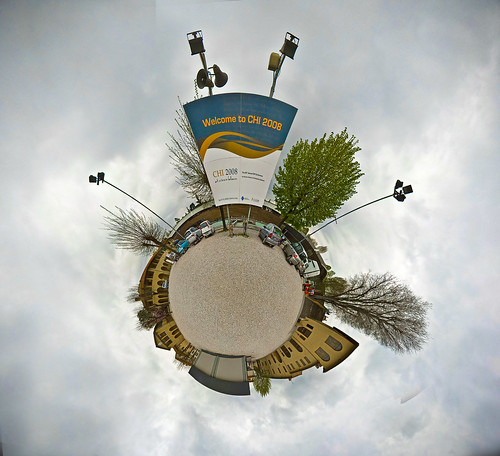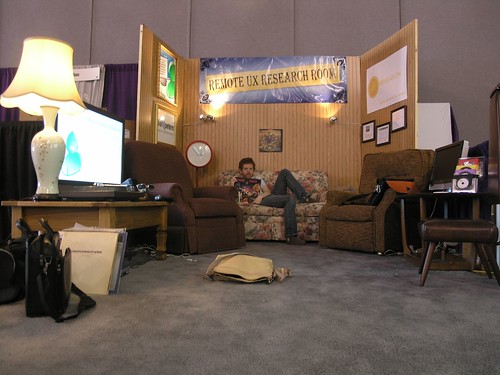Category: Events
Slides from my talk at the 2011 Design Research Conference in Chicago.
Help Us Make URF10 Perfect
We’re putting the final touches on User Research Friday 2010, which is coming up on November 19th (and the 18th for workshops). As part of making sure the day is filled with learning and joy, we’d love your help with two questions about some of our content:
1. What would you like to hear about from Darrell Benatar, the CEO of usertesting.com?
He’s agreed to come talk if there’s something of clear value he can share with a group of usability professionals. Want him to come? Send a great question or two you’d like to hear him answer. Keep in mind, he’s created a successful product that offers self-moderated research, but it’s not like he’s a practitioner who created that whole category. If you’re not familiar with the tool, here’s a detailed review.
2. Is it possible to discuss eye tracking without a war?
There seems to be two entrenched sides to eye tracking – those who think it’s a waste of money and time, and those who think it’s valuable. Since we have all been to panels that wasted our very life essence, we’d like to make sure our eye tracking panel is valuable for you. What questions or topics would you like to hear about on eye tracking from Jared Spool, Nick Finck, Leslie Cachon, and Brian Krausz?
Leave your questions as comments, or if you’d prefer to remain anonymous, email them to Nate and he will guard your identity. For reals.

I had the privilege of Jared Spool attending and critiquing some of my recent talks, and in preparation for a UIE webinar I’m giving, he took time to rip me apart give me some awesome feedback. His advice reminded me of notes I took almost ten years ago at an Edward Tufte seminar about giving great talks, and so the next logical step was to make old-timey boxing photos of them both and write a mashup of their talking tips. RIGHT? Both Jared Spool and Edward Tufte are known to be kick-ass speakers in the technology field – Tufte is all up in the freaking white house, and Jared speaks roughly 400 days a year around the world. I think we can learn a lot from their advice, and despite the artificial conflict introduced with boxing pictures, their tips are mostly complimentary.
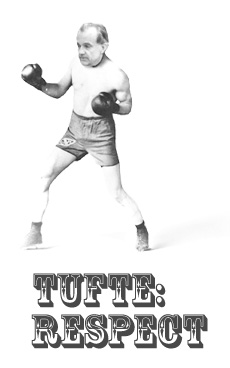
1. Show Up Early and Finish Early
Tufte would simply like everyone who gives a talk to be ready on-time and finish early. Simple right? He thinks nobody ever complained at having an extra few minutes for questions at the end. He also makes the point that we have a tendency to dumb down information too much, and feels that this is disrespectful to the audience. He says that just because people show up for your talk, they are not all of a sudden stupid. So speak to them like you would a trusted colleague, and finish a few minutes early. You’ll leave people feeling grateful and they can always come talk to you with any burning questions. This shows respect for peoples’ time, in addition to their intellect.
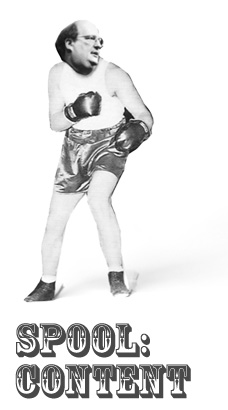
2. Don’t Be The “Fun Cool Guy” at The Expense of Content
Jared’s first feedback for me was that I sacrificed content in previous talks to seem fun and cool, and still did this a little in my most recent talk at Interactions ’10 in Savannah. I tend to agree, so this one is pretty straightforward. I concentrated more on creating fun slides and jokes, which meant sacrificing some focus on the serious meat of the talk. I’m sure nobody would look at this blog post here with 4000px of photos and 945 words and make the same criticism. But I would add that doing the opposite – putting your content at the expense of audience engagement – also sucks. Ever been to CHI?
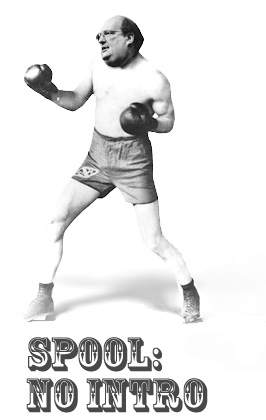 3. Your Intro was Seven Minutes. Stop That.
3. Your Intro was Seven Minutes. Stop That.
As long as you have a somewhat established background in what you’re giving your talk about, skip the introduction and dive into the material right away. Jared timed my introduction and it came out to seven minutes. He suggested that was “way too fucking long,” and that I could have given contextual background information at the relevant parts of my talk. For example, when I mention how we did remote card sorting for Oracle, say that it took over 8 years and 200 studies to experiment with these methods. If you consider this paragraph analogous to the structure of a talk, I just nailed this very principle. Oh, and I’m Nate Bolt. This coincides almost perfectly with what Tufte calls the “Particular-General-Particular” strategy. Speaking of which…
 4. Particular General Particular (PGP)
4. Particular General Particular (PGP)
The first thing you do in your talk, before you even say hello, is to give your audience a nugget of information – something of value. Say right away that less than 5% of user research is conducted remotely, to give people an information pay-off right away. Then explain it in general. Repeat. This point is so crystal clear it’s almost ridiculous, but I dare you to remove your boring intro slides and canned spiel about who you are. It feels wrong. But it works great.
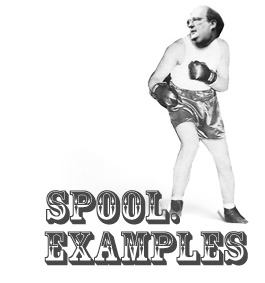 5. Reference Specific Work Examples
5. Reference Specific Work Examples
Jared said that the most interesting points of my talk were when I referenced research we did for Princess Cruises as a success, or Habbo Games as a failure. For Princess, we were able to recruit groups of family members to conduct research with them about their cruise-planning process, and it turned out that their behavior (emailing each other and not talking) didn’t match their description of the planning process (we all talk about it). Are you wondering about Habbo now? See what I just did there?
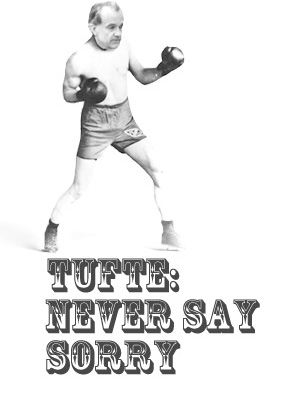 6. Giving a Talk Means Never Having to Apologize
6. Giving a Talk Means Never Having to Apologize
Don’t call attention to the meta-structure of your talk and thus take focus away from the content. A friend of mine, Steve Dodson, calls this “editorializing” during a talk. For example, avoid the temptation to say “Sorry this slide is a little hard to understand, but I’ll explain it.” That is a huge mistake. Nobody will notice anything wrong with your slide, and if they do, let them silently judge you and keep going. For the 90% of people that didn’t notice your mistake, you will have never interrupted their experience.
 7. No Telegraphing
7. No Telegraphing
Jared pointed out that in my most recent talk I told the audience three times that I was going to “cover this more in detail later,” and he was quick to make it clear that this was a really bad idea. It pulls the audience right out of the talk. It’s also a form of editorializing from the last point, and it starts people thinking right away about something else that will happen in the future. This means they stop paying attention to what you are currently saying because it has suddenly become less interesting and important. My tendency is to want to assure people that I’ll cover everything they might be wondering about, but the truth is if I respected my audience more I would know they have the patience to at least wait until the talk is finished to judge me. So don’t be afraid to be judged at the end of the talk, instead of during the middle.
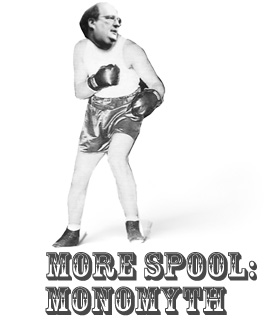 8. It’s a Story, Stupid
8. It’s a Story, Stupid
If there is any possible way to construct a traditional Hero’s Journey, or Monomyth, do it. Don’t skimp on the story in your talk. Even something as mind-numbingly boring as remote user research can have a story built around it. Jared’s suggestion was to tell how we begin looking at this vast world of UX tools and methods, whittle it down to one, what successes and failures we ran into with that method, and how in the end we triumphed helping our clients build some amazing experience. I’ve since created a character named “Marv,” inspired by our stop-motion animation studio, to use in presentations:
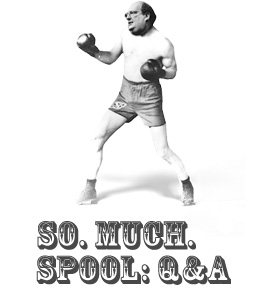 9. Leave Something For the Q&A, Bro
9. Leave Something For the Q&A, Bro
If you neurotically anticipate every question your audience could possibly have, and include answers in your slides as a desperate attempt at seeming wise, there will only be silence at the end. Think about a few potential common questions about your talk, and leave room for the audience to ask those questions. You know what’s coming, and they get to ask. This is also called “Winning.”
Watch Me Fuck Up and Learn
Now for the most embarrassing part. I make almost every single one of these mistakes in my talk at the IxDA conference “Interactions” in February of 2010. It’s gut-wrenching for me to watch this and see how badly I violate most of these rules, but maybe you can learn from my mistakes. MAYBE. Got any tips of your own? Think you’re tough enough to take on Tufte and Spool with a disagreement? Drop it all in the comments.
And the updated slides by themselves:
Come hang with us in San Francisco or attend remotely on May 6th from 9am – 4:30pm PST. We’re holding our third Escape The Lab workshop on remote UX research methods and tools. You get hands-on training with the latest moderated and un-moderated remote UX research tools.
Space is limited as we’re only allowing 10 in-person and 10 remote attendees, so register soon. It’s about 50% sold-out right now. Also, we’re giving away two FREE spots for whoever tweets the best answer to why they love or hate remote research with the tag #ETLAB.
Date: Thursday, May 6th, 2010
Time: 9am – 4:30pm
Place: Bolt | Peters User Experience at 576 Natoma Street, San Francisco, CA
Cost: $399 In-person or $199 Remote. $299 for URF Alumni.
More info: http://escapethelab.com/
Hope to see you there!
Want to learn remote research? Bolt | Peters is hosting a one-day workshop on August 26th, and you’re invited. Give us a day and we can teach you all the rocket surgery you need to conduct qualitative studies the real-time, native environment way.
Date: Wednesday, August 26th, 2009
Time: 9am – 4:30pm. Sign-in starts at 8:30am, drinks and schmoozing afterwards
Place: Bolt | Peters User Experience at 60 Rausch St., unit 102, San Francisco, CA
More Info: http://escapethelab.com
Cost: $399. Register now (space very limited). 1/2 off for students and underemployed.
By: Bolt | Peters User Experience, the makers of Ethnio
Bolt | Peters Instructors
Cyd Harrell, Director of Research
Frances James, Lead UX Researcher
Nate Bolt, CEO
Who Should Attend?
Researchers, designers, and product managers who want to watch real people use technology from the comfort of their own desks. (While saving travel costs and the planet!)
What We’ll Cover
- Strengths and weaknesses of remote ux research
- Study design & scripting
- Participant recruiting options
- Moderating in the remote environment
- Tools for screen sharing, recording, and communication
- What can go wrong and what to do about it
What You’ll Take Home
- A Trapper Keeper full of script outlines, consent forms, and software comparisons
- A starter account for Ethnio online recruiting
- A coupon for 20% off our forthcoming book, Remote Research
- 15% discount on all Rosenfeld Media books
- A newfound confidence in conducting your own remote research!
Register now at:
http://escapethelab.com/register.html (Space is superduper limited.)
Hope to see you there!
Next week, our own Nate Bolt will be battling with UX luminaries Mark Trammell, Peter Merholz, and Jared Spool, on a panel discussion about “When UX Research is Evil”.
Whens: Tuesday, April 28, from 6:30pm – 8:00pm
Free?: Yep
Blurb:
Usually when you design and conduct a user research study, you’re focused on keeping the methods sound, recruiting good users, and asking the right questions, which is already a tall order. Unfortunately, no matter how well you conduct your studies, your methods have little to do with how the research ultimately gets used. Everyone’s a little bit to blame for this: researchers can do evil by conducting useless research and presenting it ineffectively; clients can do evil by misconstruing findings, or by undervaluing research to begin with.
This talk will cover the ways that research can be misconducted, misinterpreted, and misunderstood, and on the other hand, how you can involve your clients in your research, to show them how and why it’s done, and get inspired to think about design problems through the eyes of real users. NOW EXTRA SPICY! This panel promises to a knock-down, drag-out, battle to the last! Not for the squeamish or the faint of heart.
Read more here!

Marty Neumeier gave a pretty awesome talk today at Adaptive Path’s MX Conference based on his book, The Designful Company. His intro was engaging right off the bat, so like any talk I think is about to be inspiring, I started taking lots of notes. This is them, and please offer corrections or feedback if I’ve screwed something up.
Why Did I Write This Book?
Not to get great reviews. Because right off the bat I got some pretty harsh reviews. Within the first day, people on Amazon had called it “atrocious” and lots of other things that were less than flattering. But that’s okay because I wrote this book because designers need to be at the business table.
When Innovation was Born in Corporate America
On the same day three (four?) years ago, the Wall Street Journal had two headlines “US Economy loses steam” and “Apple profits increase sixfold.” Wow, that’s quite a different pair of headlines. Marty says that was the day design innovation was born in corporate America. When the journalists asked steve jobs how the hell he could keep that breakneck pace up, he said “we intend to keep innovating.” Awesome quite.
Who is a designer?
A designer is anyone who devises ways to change existing situations into preferred ones.
The dragon gap
The space between vision and reality. Between what is and what could be. That gap is where the dragons are. Standard case study thinking does not promote innovation because it’s all about avoiding risk. The designing mindset is different. You get more bang with design. Until the late 90’s office chairs all looked the same until herman miller came along with the aeron chair. At one point it made 30% of all their profits, even though they sell these crazy cubicle systems.
Wicked problem survey
Neutron and Stanford surveyed 1500 CEO’s on their top wicked problems. #1 was balancing long term success with short-term demands. Even though business has been design-blind, the public has not. Famous business person asked the architect of the Eiffel tower “it’s nice but where’s the money in it?” and a true designer would have said “it’s an inspiring symbol of French progress, and nobody will ever forget their trip to paris.” (Nate says: There was something i missed here about “Generate wide-spread wealth”)
How Do We Accomplish All This?
How can we build products or services that out-last the CEO? How do you embed design thinking? How can we transform our business into a culture of non-stop innovation?
Answers
1. Start with a bold vision. “Who wants a dream that’s near-fetched?” Howard Shultz
2. Choose your co-conspirators. Align yourself with people who are screaming for change now
3. Design the way forward (back of the napkin book)
4. Empower your company
How do you avoid bold dumb vision? (brandon’s question)
Ford had the bold vision of a ford pinto. They made the mistake of deciding their design vision instead of designing it. That’s what happened with the aeron chair. They wanted to make the best chair ever, and they threw out the style guide of all previous office chairs to do that. They made a prototype and tried it with potential customers, and they said “it’s sort of comfortable but it’s kind of weird. I don’t know if I would buy it.” Then they worked really hard on the comfort part of it, and then eventually people said “it’s really very weird but it’s super comfortable.” Then it takes off because it is different. I worry about innovation that aren’t different enough, and the pinto was maybe too different. Clairol “touch of yogurt” shampoo was going too far. You learn to spot a real innovation by it’s combination of being weird and good. That’s where the real art comes in, doesn’t it? Knowing the difference. You protect against horrible innovation by prototyping. Test this out little by little. Either in the market or wherever. Stage-gate innovation is what we call it. Ventures do that by giving a little money, then a little more money. Businesses want to get into the market immediately, and they are impatient. So they take very small risks. That’s just me-too-ism. Anyone who can help prototype. Herman miller said “we’ve gone this far, let’s go one step further and keep trying it in the market place.
How do you convince a CEO that they are a designer?
Aesthetics of management. Changethis.com. Comparing various art forms to the way management runs business. Contrast, rythym, and things like that you use in art, you can also use in business.
It’s all about “Creating possible futures” that you then sell up.
Stop… Panel Time. SXSW ’09.
Thanks to your votes, our panel was picked! Nate‘s on it, so go to SXSW this year and heckle him. There should be quite a lively debate with Mark Trammell from Digg, Andy Budd from Clearleft, Juliette Melton from Lumos Labs, and Carla Borsoi from Ask.com.
USER RESEARCH FRIDAY is upon us!
- Date: Friday, Nov. 7th, 2008
- Time: 1pm – 5pm. Drinks and schmoozing 5pm – 7pm.
- Place: Mighty Gallery and Bar at 119 Utah Street. Google Map
- Questions: info@boltpeters.com
- Cost: $50. Register now (space very limited). Students free.
- By: Bolt | Peters User Experience
MORE INFO!
REGISTER NOW!
The Lineup

Indi Young – Author, “Mental Models: Aligning User Strategy with Business”

Steve Portigal – Portigal Consulting
Talk: “Research and Design: Ships in the Night?”

Dan Saffer – Author, “Designing the User Experience”
Talk: “How to Lie with Design Research”
Talk: “Fake Ethnography vs. Real Ethnography”

Dr. Kris Mihalic
Sr Research Manager, Yahoo! Mobile
Talk: “What Mobile Research Accomplishes in 15 Minutes”
Technology & the Future of Copyright
Introduction
These are my notes from the Free Culture Conference 2008. This is the panel on Technology & The Future of Copyright. The introduction lady said” People have said to me that we couldn’t have picked a better selection of speakers for this topic.” Okay, sweet.
Brian Carver (Professor, Berkeley iSchool)
The Story of Bob
I’m assistant professor at CAL and a lawyer.
Jacobsen V. Katzen
This is the first time a US supreme court has enforced that an open source license is enforceable. You may cheer.
It turns out the model trains are really complicated. JMRI model interface is in competition with KAM industries that’s a proprietary interface for controlling model trains. Traditionally, it’s been unlikely that patent holders would sue individual developers of FOSS projects. Bob Jacobsen is a regular guy, but he got nasty letters demanding $200,000 or more in damages.
But wait. It turned out that Katzer had incorporated some of his JMRI.
Bob Sued
He sued for copyright infringement
Who Cares?
If bob can bring a copyright infringement suit, he can get injunction, statutory damages, and some other things
Bob Loses in District Court
He files an appeal. An amazing number of people got together to help. CC, Linux Foundation, Open Souce Foundation, Software Freedom Law Center, The PERL Foundation, and Wikimedia foundation.
The Court Got It
They saw all these interested parties, and realized that copyright holders for open source materials have the right to enforce how that license is used.
Take Aways
Free software that competes with commercial software can face real threats. Control of the market can be as desirable as cash money.
Free software licenses are just as enforceable as other software licenses
As much as we’d like to shut up and code, lawyers matter. Yes, since I’m a lawyer you should be suspicious of this. (nate says: holy shit that’s funny)
Molly Van Houweling (Professor, Berkeley Law):
Copyright is Too Easy
The old story is that copyright is too hard. But my new story is that copyright is too easy. These days, copyright arises immediately. You don’t have to pay a fee, or put up a notice, or do anything. So free culture results in free copyright. Because anyone that can do free culture can get an automatic free copyright. What’s bad aboput that? Well all those copyrights can be a hurdle to future generations, because they might have to worry about yours just like they have to worry about big companies.
Proliferation of Ownership
Proliferation of the culture of authorship has also led to this proliferation of ownership. People can move forward and do stuff because they have to ask too many people for permission. That can stop development in it’s tracks. There has long been creative collaboration. Before there was Wikipedia, there were encyclopedias that had lots of authors working together. The authors, or early re-mixers, also worried about copyright.
Check out those Early Authors
So these early authors lobbied for changes in copyright law. One of them was the work-for-hire doctrine. That’s design in part to ease the process of getting copyright by putting everything in the hands of one person. But I argue this is good. That goes against Lessig saying that lucas arts taking your ideas is like digital share cropping.
All this copyright can be good? Really?
But the proliferation of this copyright can be a good thing. For example, if you want to do a star wars remix of any of their source media, you can actually know that you have one person to go to. You don’t have to go find all the individual owners of those ideas.
I’m out of time
The problem is that if there are so many owners, and we want to do something that’s licensed under both the GPL and a Creative Commons license, that can be difficult, because we have to go back to all the individual people to ask if you can change the license.
Solutions
· Really good identity information. Keeping good track of authors, good identity systems like professor lessig mentioned.
· Have things in the public domain. You don’t have to ask permission. We can get things in the PD in 2 ways:
- Creative Commons Zero CC0 is an example.
- The second is to reform copyright law.
Having too many people owning a license makes it impossible to actually get the license. This is the thing I really worried about.
Derek Slater (Google Policy):
My Picture from Google on Where the Policy Winds are Blowing
There is reason to be optimistic. You guys are winning. Copyright is changing in good ways. AT google, we’re doing a lot of balancing fair use with copyright holders on YouTube, and other places. Make sure that people get paid for their work. I think there’s been some
- Selling without DRM
- Video identification. Copyright holders can identify their work and either
- have it removed
- have it monetized. 90% of people that have had this choice
But There has also been some Troubling Signs
Internationally, there has been some heightened restrictions
- Anti-counterfeiting trade agreement being negotiated in secret. Google can’t see it (gasp) let alone the general public. Nobody knows about this
- In Europe, starting with France, ISPs and the government met to get a three strikes and your off the internet. Also, the ISPs are considering filtering techniques at the network levels to protect against copyrighted material. That’s dangerous. DANGEROUS.
- Locally, the push has happened on college campuses to do something.
So what can you do?
Helping to educate school administrators about fair use, why filtering is bad.
Get active with EFF, creative commons, free culture, grass roots efforts, and people in the hall here
Get your voice heard
Jason Schultz (Samuelson Clinic, EFF):
Ask Not what free culture can do for you, ask what you can do for free culture
A lot of people who were getting sued were artists who had put something out on a record label. But it’s not exactly you guys. But we’ve seen a change now to where some of these cases are people like you getting sued..
Diebold Evil
There’s Diebold where you have people who have posted those emails about their voting machines on the internet. Then Diebold is sending out nasty letters to those people to take the emails down under DCMA (digital copyright millennium act).
Nate says: That’s a case where there’s a clear public good being served by those letters being up. Learning that those voting machines.
Interesting Cases
Michael Cric, Ury Gellar, and these ones in detail:
· Rick Silver: claims to have choreographed the electric slide and was taking down videos from YouTube because he didn’t like the choreography.
· Stephanie Lens: 29 second video of her 18 month old baby dancing to Prince “let’s go crazy” and puts it on you tube. Universal Music sent a copyright notice telling her to take it down. EFF sued saying it was unfair and won!
That was a landmark decision. Steffany Lens didn’t start out being an activist on this, but we’re seeing a shift in the way that good law can be fought for. I’m not saying you should put yourself in the cross hairs. But you can take a stand. At EFF, the Stanford Fair Use people take on these cases. Before you put up the video you can talk to us. And if you get a “take down” notice then maybe we can help.
Have lots of babies
You can be an activist by putting out the kind of material that has a good message. You don’t have be on the defensive. If your content has a good message like a video for your parents of your child, judges can understand that. Think of ourselves as people that can get involved in the fight. (nate: hell yeah).
Question: What would you like to see happen with copyright?
Molly
I’d like to switch back to an opt-in system for copyright. It would mean copyright would only be attached when people cared enough to attach it.
Jason
A lot of people have heard about this woman who lost the case for $200,000 and now the judge is allowing her a new trial. But all that money came from this notion of statutory damages. I would change that. Most areas of laws don’t have those kind of punishments. I’d like it to not be so draconian.
Brian
Right now, we need more than one kind of copyright. Like biotech industry loves patent system, but the software industry isn’t that stoked.
Derek
Those are most of the good answers. I’m now speechless. My hope is simply that the law doesn’t get worse and we can work on other new private schemes. Warren griffen. Users paid a fee to their ISP and they can share files how ever they want.
Nate says: There were lots of other questions but I ran out of typing steam
Cheddar UX

Call us crazy, but around BP we think that the future of money is a big deal.
Some of us are excited to be heading to BarCampBank San Francisco next weekend. The point of this unconference is to dig into some of the newest, craziest ideas in finance technology, to “foster innovations and the creation of new business models in the world of banking and finance.”
If you’re interested in influencing how technology is changing people’s lives, you could do a lot worse than working with the applications that pay bills and buy dinner. Us Californians often take loans, stable currencies and banks for granted, but the financial sector is in its infancy for a lot of the world — and its future is far from written.
One of the most exciting concepts in this area is the development of peer-to-peer lending, like Kiva and Microplace. Plenty of talk about this and microloans is sure to be had at the conference.
But, like always, things get really crazy when you start thinking about doing it with your cellphone. Nokia UX researcher Jan Chipchase writes great stuff about the future of mobile banking, which has amazing potential for changing the lives of the “unbanked,” the millions of people who have no banking infrastructure at all. On his blog, Future Perfect, Chipchase wrote this week:
Imagine a world without access to banks and the services they provide – baseline services such as credit, money transfers, savings. For many of the world’s poor this is the everyday reality and it’s a space where in part due to the spread of mobile telephony there are disruptions and innovations.
In many parts of the developing world, mobile phones are the web, so being able to pay cab fare with your phone is not a iPhone fantasy — soon it might be the most secure and stable way to exchange currency for large parts of the world.
Here’s to some exciting innovation at BarCampBank on Saturday … maybe we’ll see you there.
(Photo by xiaming on flickr)
Apple is going to release an ultra-portable tomorrow at MacWorld without a doubt, and I think it will be a Mac Shuffle that lets you do random computing functions every time you press the space bar. Like email all your friends or create a photo album. You can just leave it on random and not even have to worry about what computing function will be next. Genius. 
UPA Remote Usability Sessions
Most folks we talked to at the UPA conference this year in Colorado had conducted remote moderated testing using some combination of web conferencing tools and Morae. There were a couple sessions on remote usability tools, and they focused primarily on web apps like WebEx, Breeze, GoToMeeting, etc. One speaker, Mike, did mention that tools like ethnio moving forward will be the way to go since they are made for usability profesionals, which is cool.
UPA, Y’all
I’m in Austin, Texas attending the UPA (Usability Professionals Association) conference. Last night there was a “Birds of a Feather” group for folks interested in remote usability testing. The discussion was moderator by Aaron Marcus and about 30-40 people showed up. It was great to hear how excited and passionate this small group was about these fairly bleeding-edge methodologies, both qualitative and quantitative.
A recurring theme at UPA has been combining qualitative and quantitative methods for more effective analysis. Catriona Campbell from Foviance is giving a talk dedicated to the topic. We’ve seen a lot of interest from clients lately in running these kinds of studies. We’ve conducted a bunch of these combined studies recently and seen exciting results that have helped us understand users better than if we used one method in isolation.
Last week, Nate and I had the honor to speak with a bunch of Cognitive Science students down at our alma mater, UCSD. Almost every year we send Nate and others down to talk to a Cognitive Engineering class about how much our HCI degrees mean to us in our professional lives (shocker: it’s a lot). It’s always a lot of fun and we get to meet a bunch of great people and chat it up with our mentors Dr. Jim Hollan and Dr. Ed Hutchins of the Distributed Cognition and Human Computer Interaction lab. We were joined this year by Kathy Seyama from Qualcomm‘s Usability Group, Ed Langstroth from the Volkswagen Electronics Research Laboratory, and Rod Ebrahimi from Do The Right Thing. Stay classy, San Diego.
The Booth that Gives Back!
For the sake of humanity, let me bullet point the B|P booth methodology.
- Find a local salvation army thrift store.
- Buy a van-full of the (best/tackiest) furniture you can get your hands on.
- (Optional) buy a slew of records from the 1970s (to play on the turntable you brought).
- Create your virtual living room.
- Donate all of your bounty back to salvation army at the end of the conference (except that amazing red clock – that’s a keeper).


After walking the CHI2007 circuit that called for heavy duty shmoozin & recruitin, it took visitors a second to figure out what to make of the remote usability living room. We co-hosted with our pal Steve August from Revelation.
Since we love talking to users in their most natural, laid back state, we thought it only fitting to provide a retro lounge for our CHI friends, where they could take a break from thinking too hard. People got into it — takin a load off in a recliner, listenin to pat benatar on vinyl, and smokin candy cigarettes.
Which bring us to the second most popular question we heard: where in the world did you get those candy cigs? Nothing but retro candy at groovycandies.com.

See more photos of our CHI 2007 booth here.


